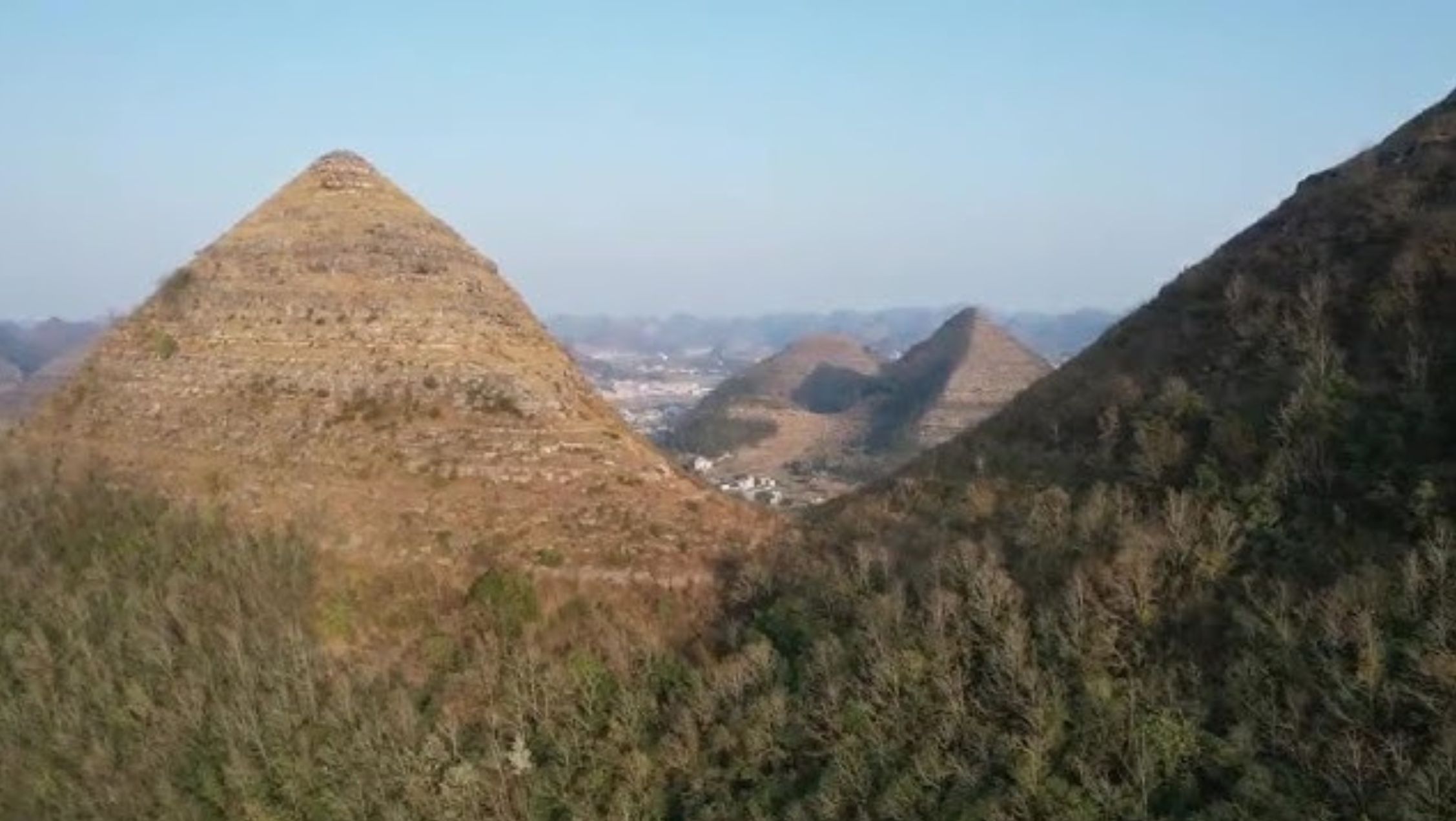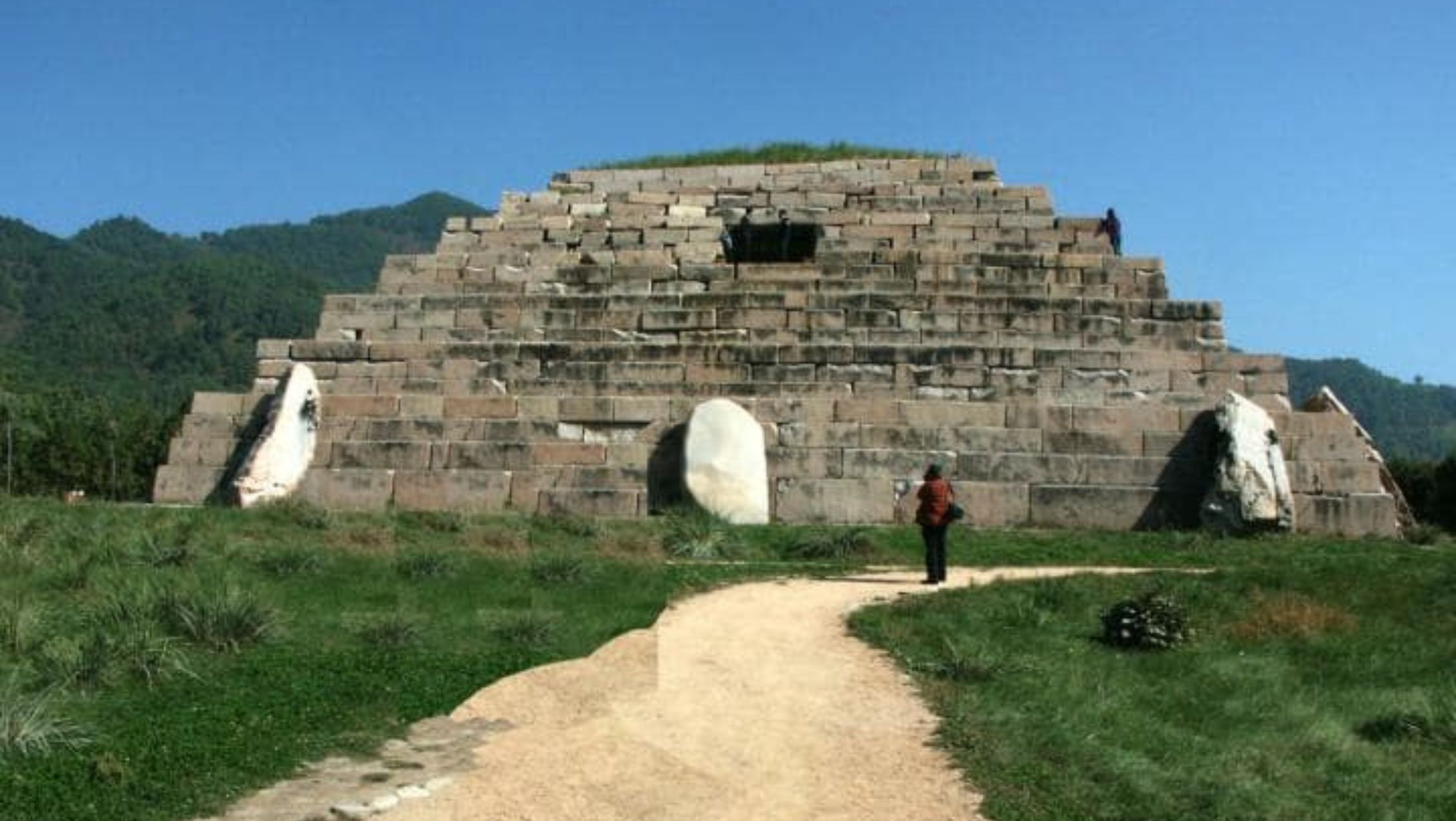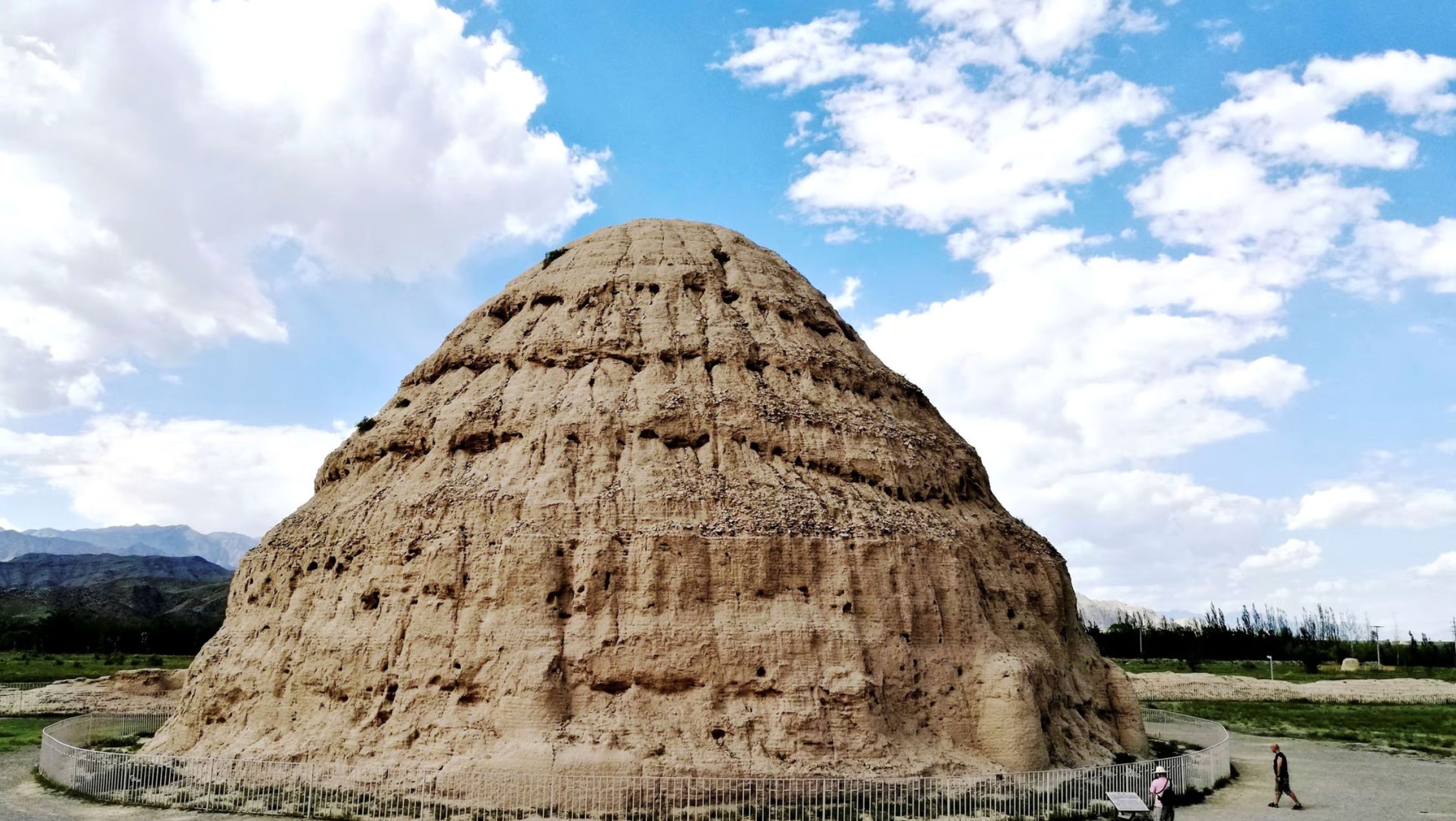China’s pyramids are a mystery waiting to be uncovered. While the grand pyramids of Egypt steal the spotlight, few know that China is home to hundreds of ancient pyramid-like tombs. Nestled in the plains and forests, these structures were hidden for centuries, concealed by nature and secrecy. Their discovery sparked a growing fascination, leading archaeologists and explorers to seek answers to their origins. Why were they built? What secrets do they hold about China’s ancient dynasties? This journey into China’s forgotten pyramids reveals not just history but the allure of uncovering the unknown.
A Brief History of China’s Ancient Pyramids

China’s ancient pyramids have a rich history tied to powerful dynasties. Most date back over two thousand years to the Qin, Han, and Tang dynasties. These structures were built as elaborate tombs for emperors, nobility, and their families, symbolizing wealth and power in the afterlife. Unlike Egypt’s stone pyramids, China’s pyramids were primarily built with earth, allowing them to blend into the landscape.
The pyramids first gained attention in the early 20th century, when foreign explorers spotted these massive mounds. As archaeology in China grew, significant sites were unearthed, especially the tomb of Qin Shi Huang, the first emperor of unified China. This tomb, guarded by the famed Terracotta Army, showcased intricate burial practices and the empire’s might. Each discovery brought more insights, revealing how these dynasties used grand tombs to honor their rulers.
Throughout the Han and Tang periods, pyramids remained popular burial forms. Archaeologists found that these tombs also held treasures, intricate artifacts, and inscriptions. Such findings have helped historians understand ancient Chinese beliefs about death and the afterlife. China’s pyramids continue to fascinate researchers and offer glimpses into the grandeur of its early empires.
The Mausoleum of the First Qin Emperor: A Monument to Immortality
The Mausoleum of the First Qin Emperor, Qin Shi Huang, stands as China’s most famous ancient pyramid. Built to honor the first emperor who unified China in 221 BCE, this tomb complex is massive, covering over 56 square kilometers. The tomb is famously guarded by the Terracotta Army, an extraordinary array of life-sized clay soldiers, horses, and chariots meant to protect the emperor in the afterlife. Each soldier is unique, reflecting the emperor’s desire for a realistic, eternal army.
The mausoleum was constructed with a symbolic layout representing Qin Shi Huang’s empire and power. The main burial mound resembles a pyramid and is said to contain rivers of mercury, symbolizing eternal life. The site’s grand scale and intricate planning suggest a design that reflects both the emperor’s achievements and his quest for immortality. This pyramid tomb was built over decades, using tens of thousands of workers, showcasing the emperor’s dominance and China’s advanced engineering.
The Mausoleum represents more than a burial site; it’s a tribute to Qin Shi Huang’s belief in his divine rule. It continues to captivate researchers and visitors, embodying ancient China’s complex views on life, death, and the afterlife.
The Unknown Builders: Who Constructed China’s Pyramids?
The builders of China’s pyramids were a vast workforce, likely composed of skilled laborers, artisans, and conscripted workers. Ancient records suggest that constructing these grand tombs required tens of thousands of people, often peasants and prisoners, under strict imperial command. Skilled engineers and architects designed the pyramids, using advanced techniques to shape massive earthen mounds that could endure centuries. Their work reflects a mastery of earthworks, allowing these tombs to blend naturally into the landscape.
Engineering skills were critical, as builders crafted complex interior chambers and defensive features to protect the buried elite. Techniques included layering earth and clay, creating stable structures with a core that resists erosion. Some historians believe the builders may have used primitive forms of tamping and rammed earth, methods also seen in ancient construction across Asia. This practical approach set them apart from the stone-cutting techniques of Egyptian pyramid builders, emphasizing functionality and longevity over sheer height.
Interestingly, China’s pyramid construction reflects common themes seen in other ancient cultures, like Egypt and Mesoamerica, where grand burial structures honored the dead. Yet, Chinese builders adapted these themes to fit their distinct beliefs and resources. Their work stands as a testament to ancient China’s ingenuity and respect for the afterlife.
Mystical Alignment: Astronomical and Geographical Patterns
China’s pyramids display intriguing alignments with celestial bodies and significant geographical points. Many of these structures, including the tomb of Qin Shi Huang, align with the cardinal directions, particularly north and south, reflecting ancient beliefs in balance and order. Some researchers suggest these alignments were meant to connect the earthly realm with the heavens, symbolizing harmony between humans and the cosmos. This orientation might also have had a practical purpose, guiding spirits of the dead in their journey to the afterlife.
China’s pyramid alignments bear similarities to other pyramid-building cultures, such as Egypt’s Giza pyramids and Mexico’s Teotihuacan. For example, both the Giza and Chinese pyramids show deliberate orientation, possibly to honor celestial bodies like the sun and stars. Such alignments indicate that ancient cultures may have shared a common desire to connect their monumental structures with the cosmos. However, each culture’s alignment style reflects its unique beliefs and environment.
In China, these astronomical patterns might have reinforced the emperor’s divine rule, connecting his burial site with celestial power. By aligning the tombs with natural and celestial elements, the builders symbolized a bridge between the earthly and spiritual realms. This alignment endows China’s pyramids with a mystical significance, inviting further exploration.
The Enigmatic White Pyramid: Reality or Myth?

The “White Pyramid” of China is a mysterious structure that has fueled both legend and intrigue. First reported by U.S. Air Force pilot James Gaussman during World War II, the so-called White Pyramid was described as an enormous, gleaming monument with a capstone. Gaussman’s sighting sparked rumors of a massive pyramid hidden in the forests of Shaanxi Province, larger than Egypt’s Great Pyramid. However, subsequent searches and satellite imagery have yet to reveal a structure matching his description, leaving its existence in question.
Debate continues over whether the White Pyramid is real or simply an exaggerated account of existing Chinese pyramids. Some speculate that Gaussman may have mistaken the famed Maoling Mausoleum or another ancient tomb for the mythical pyramid. Yet, enthusiasts argue that such a unique monument, if it exists, could hold historical significance for China’s ancient past. Historians and archaeologists believe it could contain untold secrets about early Chinese dynasties.
Current exploration efforts rely on advanced technology like satellite imaging and ground-penetrating radar to search for clues. So far, no “White Pyramid” has been confirmed, though interest in the mystery persists. Whether reality or myth, the legend of the White Pyramid continues to captivate imaginations worldwide.
Guardians of the Afterlife: The Role of China’s Pyramids in Burial Rituals
China’s pyramids were much more than elaborate tombs; they were sacred spaces designed to honor the dead and prepare them for the afterlife. Ancient Chinese beliefs held that death was not an end but a transition to another realm. Rulers and elites constructed these pyramid-like tombs to ensure a smooth passage for their souls, with the idea that a proper burial would protect them in the afterlife. The grandeur of these tombs also symbolized their power and allowed them to continue influencing the world from beyond.
The pyramid structure of these tombs had deep symbolic meanings tied to Chinese cosmology and ancestor worship. The square bases of the tombs represented Earth, while the pyramidal shape was seen as a connection to the heavens, embodying the union of both realms. Emperors, seen as the “Sons of Heaven,” used this layout to emphasize their divine right to rule. Additionally, the placement and contents of the tombs aligned with the belief that ancestors would continue watching over their descendants.
Lavish offerings, treasures, and intricate designs filled these tombs, reflecting the importance of honoring the dead. The tombs, as guardians of the afterlife, ensured a legacy that would transcend generations and immortalize China’s ancient rulers.
Archaeological Discoveries: Artifacts and Secrets Unearthed
Archaeological digs around China’s pyramids have revealed a wealth of artifacts that shed light on ancient Chinese life, power, and beliefs. Key finds include intricate jade carvings, weapons, pottery, and precious metals symbolizing the status and wealth of the tombs’ occupants. The most famous discovery is the Terracotta Army in the mausoleum of Qin Shi Huang, a life-sized clay army created to protect the emperor in the afterlife. Each figure is unique, reflecting the level of detail and dedication to honoring the emperor’s spirit.
Recent advancements in technology have allowed archaeologists to uncover even more secrets. Ground-penetrating radar and advanced imaging have revealed hidden chambers and undisturbed artifacts without damaging the pyramids. These tools have shown that some tombs still contain unspoiled relics, preserved for centuries under layers of earth. Excavations have also revealed murals, inscriptions, and preserved silk fabrics that provide a window into the customs and spiritual beliefs of ancient Chinese dynasties.
These ongoing discoveries continue to paint a detailed picture of China’s ancient rulers and their visions of the afterlife. Every find brings archaeologists closer to understanding the lives and legacies of those who once commanded vast empires, leaving behind symbols of power and mystery.
Legends and Folklore Surrounding China’s Pyramids
China’s pyramids are surrounded by rich folklore and legends that add layers of mystery to these ancient burial sites. Local tales tell of emperors who sought immortality, constructing their tombs with vast treasures and powerful guardians. Stories speak of curses on those who disturb these tombs, claiming that ancient spirits protect the sites from intruders. These myths have helped shape the perception of the pyramids as places where the past remains fiercely guarded.
Folklore has influenced both local and modern understanding of the pyramids’ meaning and purpose. Some legends suggest the pyramids serve as cosmic portals, where emperors could communicate with the heavens even after death. These beliefs have made locals wary of exploring or disturbing these sacred sites, reinforcing the idea that these tombs are not mere historical relics but active spiritual spaces. The power of these stories highlights the enduring connection between China’s past rulers and its people.
Today, these legends continue to captivate the public, shaping how the pyramids are viewed in popular culture. The folklore surrounding China’s pyramids emphasizes their significance as more than just monumental tombs—they are symbols of a mysterious, enduring legacy that bridges China’s ancient world with the present.
The Future of China’s Pyramids: Preserving Ancient Heritage

Preserving China’s pyramids is crucial for maintaining its ancient heritage, yet significant challenges lie ahead. Many of these historic sites face threats from urbanization, as expanding cities encroach upon once-remote areas. Tourism also impacts the pyramids, with increased foot traffic leading to potential damage. Additionally, natural erosion from weather and environmental factors can degrade these ancient structures over time.
Efforts to preserve these sites involve careful planning and international collaboration. Archaeologists and local authorities are working together to establish protected areas, ensuring that the pyramids remain intact for future generations. Research into innovative preservation techniques is ongoing, aiming to combat erosion and stabilize structures. Education about the cultural significance of the pyramids is also essential, as it fosters respect and awareness among visitors.
The future of China’s pyramids also holds promise for further research and exploration. International interest in these ancient sites is growing, encouraging collaboration with scholars and archaeologists worldwide. This global perspective can lead to new discoveries and a deeper understanding of China’s rich history. By prioritizing preservation efforts, we can safeguard these monumental treasures while continuing to explore their mysteries and significance.
Conclusion: China’s Pyramids
China’s pyramids offer a fascinating window into the nation’s ancient history and culture. These monumental structures hold immense archaeological and historical value, revealing insights into the lives and beliefs of past dynasties. Continued exploration and preservation efforts are vital not only for safeguarding these sites but also for contributing to global heritage. As researchers and enthusiasts work together to uncover the mysteries surrounding these pyramids, they foster a deeper appreciation for China’s rich cultural legacy. The journey to unlock the secrets of China’s pyramids continues, promising to enrich our understanding of ancient civilizations and their enduring impact on the modern world.
FAQs
Where are China’s pyramids located?
China’s pyramids are primarily found in the Shaanxi province, particularly near the city of Xi’an. The most notable pyramid is the Tomb of the First Qin Emperor, but there are several lesser-known pyramids scattered throughout the region, often hidden beneath vegetation or farmland.
How many pyramids are there in China?
While the exact number is debated, estimates suggest there are over 100 pyramidal structures across China. Many of these are burial mounds, and their true significance and size remain largely unexplored.
What are the main differences between Chinese pyramids and those in Egypt?
Chinese pyramids generally have a broader base and a more truncated shape compared to the smooth, pointed tops of Egyptian pyramids. Additionally, Chinese pyramids often serve as burial mounds rather than monumental structures designed solely for royal entombment.
Are there any ongoing archaeological projects related to China’s pyramids?
Yes, several ongoing archaeological projects focus on investigating the pyramids and their surrounding areas. Researchers are using advanced technology, including satellite imaging and ground-penetrating radar, to locate hidden tombs and artifacts.
What role do local communities play in the preservation of the pyramids?
Local communities are vital in preserving China’s pyramids. Many locals are involved in tourism efforts and educational programs that promote awareness of these historical sites. Their support is essential for sustainable tourism practices that protect the pyramids while providing economic benefits.

